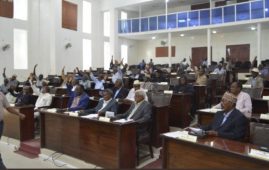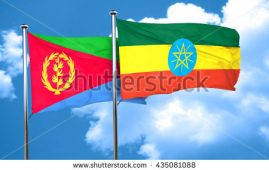The past couple of years saw Ethiopia registering accelerated economic growth of double digit. The growing economy demanded the expansion for various utilities and infrastructural facilities in various sectors, among which transportation is one. In line with this there is a strong need for having better transport access to the various corners of the country in order to exploit the underutilized potentials of the country.
However, as some studies indicate 70 per cent use of transportation in the country is traditional non-motorized, while modern motorized transport constitutes only a small per cent. Apart from that, the increasing foreign trade necessitates the country to spend a large amount of money for transportation. In some documents, it is stated that Ethiopia spends about 18 per cent of its imported value and 8 per cent of its export earnings on transportation that in turn will affect the country’s competitiveness in the international market.
The significance of railway systems in an economy is paramount. That has led the government to see railway transport as an important alternative in the country’s transportation system. According to Dr. Getachew Betre, General Manager of Ethiopian Railway Corporation (ERC), railway has more advantages compared to road transport. Firstly, railways are better suited for serving bulk freight on long distance over 250-300-kms and above. Secondly, rail mode of transport is cheaper at critical traffic figure of up to one million tonnes per year carried for over 1000-kms and can be economically sustaining without government subsidy. In recent studies, it is showed that railways cover their operating cost and achieve normal return on capital under competitive price. In terms of energy, railway carries 80T/Km per liter compared to 24T/Km by trucks and electrification of railways advances its advantage making it six times cheaper than diesel train.
Cognizant of these facts and advantages, many agree that it is a right time for the government to consider railway as an alternative way of transportation. Accordingly, the government has a plan to implement about 23,000-kms railway line during the GTP period; meaning in the next three years. As the current project status document from Ethiopian Railways Corporation (ERC) show that the surveying of the corridor was the critical path for the preliminary design and cost estimation of the routes. So, Airborne survey has already been made to design the railways based on Geographic Information Systems (GIS), and now it is 100 per cent complete. From this survey huge volume of spacial data has been collected including Aerial photo, Digital Terrain Model, Digital Surface Model and Contour Data. Moreover, conceptual design preparation is partly completed by local professionals. Based on the plan detailed design implementation plan is envisaged to be contracted giving priority to local consultants. Accordingly, 320-kms rail line full design was completed and contracted for construction,while the other two are prepared for contractual agreement, and railways for other corridors are under the process of design.
In order to build the future skilled human capacity of the Corporation, curriculum has been developed in the academic institutions and is designed to be implemented with intensive training.
The construction of railway requires a large amount of Money. The estimated cost for the construction of one kilometer railway in Ethiopia is expected to be three million USD. According to Debo Tunka, Engineering and Project Implementation Department in ERC Head, the construction cost for a new railway line investment on railway project can be divided as locally implemented costs which is about 45 per cent of the total cost with 30 per cent of it for civil work and 15 per cent for earth work. The other 55 per cent that is foreign implemented costs; with 25 per cent of it for track and rail works, 10 per cent for electrification, 15 per cent for signaling and communication, and the remaining 5 per cent for others.
Despite the high expenses and difficult tasks that may be faced ahead during construction, the building of these railway have an immediate impact on the reduction of the transport related bottlenecks to the economy. That is achieved through the reduction of high transportation cost strengthening competitions in the international market, not to mention its contribution to the local market at Woreda level. “The building of railways will add value to the corridors beyond our imagination by stimulating high level development with a larger immediate economic impact,” says Getachew.
Ethiopia already has a 781-kms meter gauge diesel railway that stretches from Addis Ababa to Djibouti and served almost 100 years. During its time it has served as a major means of passenger and freight transport to the eastern part of the country and contributed to the establishment and expansion of major economically active urban centres along its line like Adama and Dire Dawa. Nevertheless, as time passed by its capacity deteriorated and currently it is out of service. Though, the government was trying to rehabilitate this railway and frequently signed an agreement with few companies, it did fail due to many reasons.
No doubt, the current railway construction plan of the government is of paramount significance in supporting the economic development of the country. Nevertheless, the owner of railway project in the country, Ethiopian Rail Way Corporation is also looking forward to bridging gaps existing in skilled man power by establishing a Railway Institute. Local contractors and consultants are also expected to build their capacity in order to carry out projects in relation to railways. Similarly, government and private metal manufacturing industries should upgrade their technologies to produce parts in puts necessary in the construction of railway lines.
* Originally published on the Ethiopian Herald, on July 27, 2012, titled “Ethiopia’s railway project; its role in the GTP ”, authored by Million Fikru.
*****************
Check the Railway archive for related posts.





